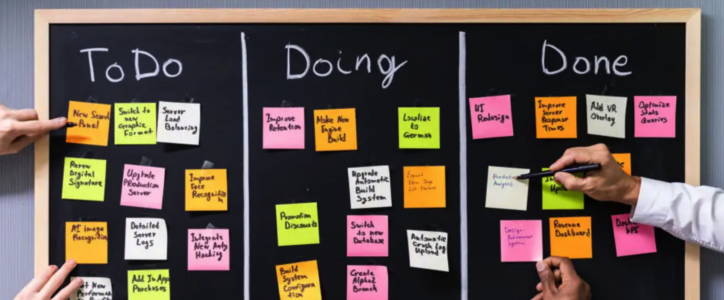How to Improve and Encourage Team Members to Use the Kanban Board Effectively

Kanban boards are a powerful tool for visualizing and managing work in a project. Whether physical or digital, they help teams stay organized, track progress, and prioritize tasks. However, one of the common challenges in using a Kanban board is keeping team members engaged and preventing cards from going stale. When tasks sit untouched or aren’t updated, it can disrupt the flow of work and hinder productivity.
Here are some practical strategies to encourage team members to use the Kanban board consistently and prevent tasks from stagnating.
1. Make the Board a Daily Habit
One of the best ways to ensure the Kanban board stays active is to incorporate it into daily routines. Hold short, daily stand-up meetings where the team reviews the board together. This provides an opportunity for everyone to update the status of their tasks, share progress, and address any blockers.
These meetings help keep the board up to date and ensure that cards aren’t overlooked. They also create accountability, as team members are expected to share their progress regularly. If the board is updated daily, it becomes a central part of the workflow rather than something easily forgotten.
2. Simplify and Streamline the Kanban Board
A cluttered or overly complex Kanban board can overwhelm team members, causing them to disengage. To avoid this, keep the board as simple and intuitive as possible. Use clear column titles like “To Do,” “In Progress,” and “Done,” and ensure that task descriptions are concise but informative.
Additionally, limit the number of tasks that can be in each stage at one time (often referred to as Work In Progress, or WIP, limits). This encourages team members to focus on completing tasks before starting new ones, which helps prevent cards from going stale in the “In Progress” column.
3. Set Clear Expectations for Task Ownership
Assigning clear ownership of tasks is essential for keeping the Kanban board moving. When someone is responsible for a task, they are more likely to update its status and ensure it doesn’t linger on the board. Encourage team members to move their cards through the board as they complete tasks.
In addition to task ownership, emphasize the importance of moving tasks across the board in real time. Delayed updates often result in confusion, as it becomes difficult for others to see an accurate reflection of the project’s progress.
4. Reward Timely Updates and Task Completions
Positive reinforcement can go a long way in motivating team members to stay engaged with the Kanban board. Acknowledge and reward team members who keep their tasks up to date and complete their work efficiently.
Consider using gamification techniques, such as awarding points for task completion or recognizing team members during meetings for keeping their cards updated. These small incentives can encourage consistent use of the board and make the process more enjoyable.
5. Address Stalled Cards Immediately
When a card has been sitting in one column for too long without any progress, it’s important to address it as soon as possible. During daily or weekly reviews, identify stalled cards and discuss what’s preventing them from moving forward. Is there a bottleneck in the process? Does the task need more resources or clarity?
By proactively addressing these issues, you can prevent tasks from becoming stale and ensure that the team remains focused on moving work forward.
6. Provide Training and Support
Not everyone is familiar with how to use a Kanban board effectively, especially if they’re new to agile or project management. Offering training on how to use the board and explaining its benefits can help team members see its value. When people understand how the board can streamline their work and make collaboration easier, they’re more likely to use it consistently.
Additionally, if the board is digital, make sure the chosen tool is user-friendly and accessible. Tools like Trello, Jira, or Asana have intuitive interfaces and features that can make the Kanban process easier to adopt.
7. Create a Culture of Transparency and Collaboration
A well-functioning Kanban board fosters a culture of transparency, where everyone can see the progress of the project. Encourage open communication and collaboration around the board. This helps create a sense of shared responsibility for the project’s success, motivating team members to actively participate and keep the board updated.
Conclusion
A Kanban board is a valuable tool for managing work, but it requires active participation to be effective. By making the board part of daily routines, simplifying its structure, and providing clear ownership, teams can keep tasks flowing smoothly and prevent cards from going stale. Encouraging transparency, offering training, and rewarding timely updates further promote engagement and ensure the board remains an integral part of the project management process.






